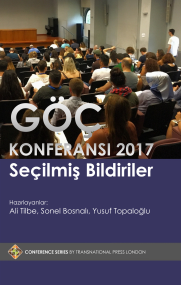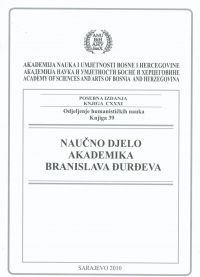
Подунавље и Посавина Србије у позном средњем веку. Историјско-географски аспекти истраживања
The period between the Battle of Kosovo (1389) and the formation of the eyelets of Buda (1541) and Temesvár (1552) was marked by the breakthrough of the Ottomans in the Danube region and their struggle with Serbia (until 1459) and Hungary to master this area. It is also the medieval period richest in sources for the study of social and economic history and historical geography of the Serbian Podunavlje and Posavina (the Danube and the Sava region). This paper presents a review of previous research on this issue, points out the main historical sources and problems that they put in front of researchers and presents the latest research results, in part resulting from the author’s research. The „land” (zemlja) in medieval Serbia was greater territorial and administrative unit, which included several župas (districts). In the area of northern Serbia, in Posavina, there was the “land” of Mačva, and in Podunavlje the “land” of Kučevo and Braničevo. More recent studies have defined the borders of specified areas and corrected earlier misconceptions about the propagation of the Hungarian government in northwestern Serbia in the late Middle Ages, caused by equalizing the Mačva “land” and the Hungarian Banat of Mačva (Macsó). The Hungarian Banat of Mačva was at that time confined to a narrow area next to the Sava with several fortresses and their districts. By change in the Hungarian-Serbian relations in the first half of 15th century, these regions were connected to the Serbian state until the Ottoman conquest in 1458/1459. Kučevo, which expanded between the rivers Velika Morava, Danube, Jasenica and the mountains of Avala and Kosmaj, was in administrative terms united with the “land” of Braničevo. However, during the 14th and the 15th century Kučevo survived as a particular geographical area. Comparing the data on settlements provided by Serbian charters with material from the Ottoman censuses – defters, one can get a picture of their continuity and discontinuity, which indirectly indicates depopulation during the warfare that led to the collapse of the Serbian state. Such research in the area of Braničevo shows that half of the villages of Braničevo completely lost their inhabitants during the Ottoman subjugation of Serbia. The comparison of the data of the medieval and Ottoman sources also showed a kind of continuity in economic centres – market places in the area of Braničevo. The Ottoman defters have shown that there were a large number of settlements in the Serbian Danube and the Sava region in the second half of the 15th and the first decades of the 16th century, but they were mostly small. Archaeological excavations provide valuable findings on the appearance of the settlements and way of life in the Danube and the Sava region. The Ottoman defters provide the insight into the economic structure in rural settlements during the second half of the 15th and early 16 century. The defters enable to obtain a relatively accurate picture of the proportional representation of crops in total production. On this basis, it may be noted that wheat was grown most of all the cereals (about 35%), followed by barley, rye, millet, oats. Among other crops, in addition to growing fruits and vegetables, followed by flax and hemp, vine was grown to a large extent.
More...











